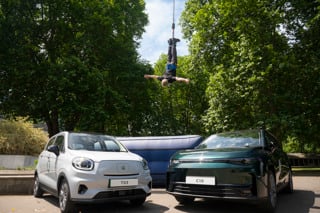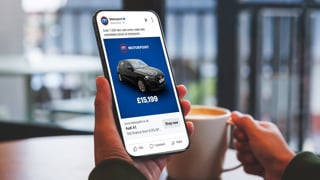By Debbie Kirlew
Social media plays an ever increasing role in dealers’ online relationships with customers. While customers actually buying cars via Twitter or Facebook has yet to come anywhere near the mainstream, areas such as marketing activity, targeting buyers, customer engagement and reputation management are all affected. AM asked an eight-strong panel of experts how dealers could best take advantage of the various social media channels.
Dedicated role or team?
The experts
Ian Godbold, marketing director, Cambria Automobiles; Philip J Deacon, head of marketing, Marshall Group; Dave Tindall, marketing manager at Volvo Cars Poole; Jeremy Evans, managing director, Marketing Delivery; James Whatley, planning partner for innovation at Ogilvy & Mather; Dave Cottrell, digital experience manager, Volvo Car UK; Philip Calvert, social media consultant; Thomas Power, chief digital officer, Electric Dog.
Ian Godbold: We are supported by a web specialist in each of our dealerships who are responsible for liaising with Marketing Delivery to provide information and content.
Philip J Deacon: We don’t have a dedicated social media role, it’s part of everyone’s remit. We have a team of marketers working across our divisions and they find the content.
Dave Tindall: It is essential to have an expert to maximise the opportunity and ensure consistent and quality use to deliver high engagement.
Jeremy Evans: You need a dedicated person or team to ensure there’s a consistent level of content published across all channels and, just as importantly, there’s someone listening to comment on social channels.
James Whatley: It depends on where the company is on its social media journey.
Dave Cottrell: Social media isn’t about one team or even an agency. It’s integrated into all of our communication plans for marketing and PR.
Philip Calvert: There needs to be somebody or a department that owns social media, but most of all it needs a strategy.
Thomas Power: If a social media specialist doesn’t have a Klout Score of 70, they shouldn’t be doing the job. A Klout Score of 70 is the equivalent of having a first-class degree.
Planning content
IG: Our web specialists are tasked with providing Marketing Delivery two Facebook and Twitter posts a day although some provide much more. Once you start pooling your resources, you will be surprised at the amount of content you generate.
PJD: We have a rolling two-week content plan. Around 50% of our content is planned. You can plan, but social is so relevant that you don’t want content to seem contrived.
DT: This is a 50/50 – while it is important to plan activity to ensure a consistent presence, it is also important to give social media channels a spontaneous feel.
JE: Social media should run alongside everything else in the marketing mix and everything should be integrated.
JW: Listening is the number one piece of advice we give. Listening leads to insight, you may discover customer care issues, so it would make sense to invest in some advisers rather than jumping straight into a social media strategy.
DC: Content calendars are good, but reacting to current affairs, industry and competitors is just as important and needs to be flexible and agile in its delivery.
PC: A strategy or plan needs to allow for fluidity. Businesses need to be looking for the opportunity to have a conversation and you can’t plan a conversation.
TP: Build a big following and treat your social media marketing like you are running Netflix and not selling cars. The most important point is to put on a show.
Non-marketing content and engagement

IG: In the early days, the view was very much that you don’t put out offers on social media, but that’s changing now and consumers are open to knowing about a good offer.
PJD: I try to create a champion in each site. The local champions and, indeed, anyone in the dealership, send suggestions of content through to the marketing team, who wheedle out anything too sales-led and aim to post within the hour. We use heritage auto adverts, customer handovers and quirky pieces of information such as ‘on this day…’ and we have things like ‘Friday Fun’ and ‘Thursday Throwback’.
DT: We very rarely post offers, preferring to focus on quality imagery, video, competitions and other engaging content.
JE: Local stories and local people should be featured on social media channels. Lots of community-based content will drive higher levels of engagement.
JW: Customer insight should determine content, but there should be a variety of different types of content so people don’t think you are constantly broadcasting sales messages.
DC: All content has to be interesting and relevant to your audience. Conversation is just as important as, if not more important than, content.
PC: Once you have the reputation of adding value on social media, there’s no reason why you should not get involved with selling.
TP: It’s now not about content is king, but putting on a show. You have got to entertain your audience.
Paid-for targeting
IG: This is the game-changer. We have found Facebook targeting to be among the lowest cost per lead, but it has to be targeted and done properly.
PJD: We look very strongly at the customer demographics for each model and use our own customer information to find people like them. Digital makes up 75% of our marketing budget and of that about 25% is spent on Facebook advertising.
DT: Do it. Depending on content and targeting, this is a way to get your message in front of people who may not otherwise have exposure to the brand or dealer.
JE: You need to pay to boost both sales messages and non-sales content. Dealers should be allocating a budget to social media advertising in the same way they do for Google.
JW: Organic reach is practically zero. All our clients have a paid strategy. Without paid-for, you would struggle to reach your audience.
DC: Nearly all social media platforms have a monetised business model. Brands need to embrace this and understand the power of extending the reach of your story.
PC: With Facebook, you can be highly targeted yet it is absurdly cheap. We will start seeing it get more expensive over the next two years, it’s inevitable.
TP: You can’t survive without investment. Pay to play.
Frequency and timings
IG: We see our biggest return from the micro-targeted audience of in-market buyers, where we flag up the vehicle they have shown an interest in when they browse other web pages.
PJD: We do look at timings, particularly with recruitment, we would post on LinkedIn at 6.30am – as soon as people look at their phone. As for regular content, we share what we have today because tomorrow it’s old news.
DT: We support national events or occasions more so than specific times.
JE: Frequency and consistency is important, rather than getting hung up on the time of day to best send.
JW: Context and content can be really powerful.
DC: With the luxury of dark posts and paid platforms, you can test and learn many different scenarios to see what works best for your audience, at what times, and on what devices.
PC: If you’re paying for posts, time of day needs to be taken into consideration along with the type of audience you want to reach.
Adjacent content
IG: We do some left-of-field content when areas are highlighted by our SEO agency.
PJD: Our objective is to showcase the company and the people – ultimately that drives sales.
DT: We made the strategic decision to focus on food and dining within our area, as we felt the local events had a synergy with our potential customer base.
JW: It should be more about utility, that’s addressing the concerns browsers have and serving up the content that answers questions.
PC: Brands invest a lot of money when deciding what they should be associated with, so it’s common sense for dealers to also use such content, but dealers also need to know their own customers in detail so they can post content that is of interest at a local level.
TP: You need to build a community, a club or a group that people want to join. Once you have created your community, its members may well consider your products and services through engagement.
Reputation management
IG: The post is acknowledged and the conversation is taken offline. You know that if you make a complaint on Twitter and it takes more than 10 minutes to get a response, the company has a problem.
PJD: We respond quickly seven days a week, between 8am and 11pm. We do have people who highlight concerns and we respond quickly and deal with it. Social media is going the way of live chat, where it is practically 24-7 so we have to be more agile and adaptable.
DT: Have a robust process and don’t be frightened by complaints, they are an opportunity to show how you take care of customers when something has gone wrong.
JE: When customers leave a comment, compliment or complaint, it needs to be picked up quickly and responded to within 20 minutes.
JW: Your approach online to any complaints or criticisms should be exactly the same as it is offline.
DC: It’s crucial to treat a customer query in the same way they would be dealt with via email, phone or letter. It’s also important to show prospective customers how existing customers are dealt with to gain their trust.
PC: Google indexes a lot of tweets and there are millions of customer service complaints which then show up in the search results, so whether comments are good or bad, you need to respond.
TP: You have got to be fast with any response, less than 60 minutes or the relationship will start deteriorating. Same-day response is now no longer enough.
Return on investment (ROI)
IG: I’m not interested in reach, likes and clicks, but how engaged is that customer once they visit our website. You can generate high volumes of traffic to the website, but if they don’t convert to a lead, that’s not real ROI.
PJD: So far, the group has run 200 campaigns in 2016, about 20 a month, with a reach of 11.8 million and 300,000 click-throughs to the website, at an average click-through rate of 18p.
DT: Many social media metrics don’t provide definitive ROI, however some of the more advanced tools when combined with goal conversion in website analytics tools allow us to get a clear understanding of ROI. It is also important to take social media as just part of the marketing mix and to recognise that if done consistently and well it will provide ROI.
JE: The main metric of social media is the amount of traffic directed to your website. In October, Facebook advertising drove 60% of new car page views on dealer websites for our clients at an average cost of 25p per click.
JW: You need to think about your objective, so if the goal is to increase test drives, your ROI will be measured by how many bookings you achieve. Measuring likes and shares is worthless, it adds no value.
DC: Never get hung up on chasing ‘likes’ and community sizes. I’d rather have 10 people that love Volvo than 100 that like us.




















cindy - 01/07/2018 17:22
Excellent article and even more relevant today! We have partially republished your article with linked reference to our student news post database at https://cnri.edu